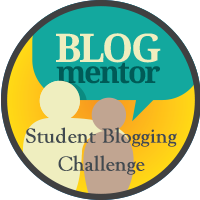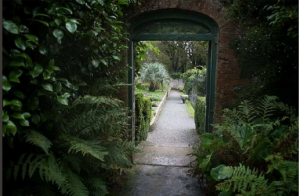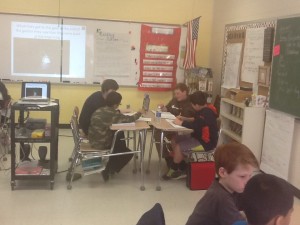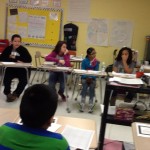So in a previous post (March 2nd) about Cowardice and Courageousness, I wrote about how the students prepared for a discussion on courageousness and cowardice revealed in reading pieces. Now it was time to discuss what the students discovered. I love our Socratic Circles. Students love to discuss, and this structure gives the students a chance to discuss their thoughts face to face and through technology.
The discussion was based off of the text “Terrible Things” by Eve Bunting and the poem “First They Came”. Before students started the discussion, they set goals for themselves- what they wanted to accomplish during the discussion. Some of the choices for goal setting were as follows:
- to speak at least three times
- to ask at least two questions
- to take notes
- to say, “I want to build on”
The class was split into two circles- an outer- who observed the conversation and the inner- who were part of the face to face discussion.
Sometimes when the outer circle is observing the inner circle, their minds can drift out of the conversation and onto something more interesting to them. So in order to combat that, I implemented two different ways for students to be involved in the conversation when they are not physically involved.
First way: I love finding ways to incorporate technology into my lessons- here is one way I used with the students in two of my reading blocks, Todaysmeet. Todaysmeet is a web room that can be created to promote discussion. Utilizing Todaysmeet, helps students to connect with each other in the realtime discussion. They can make comments, ask questions, and the inner circle can use that feedback to tailor their conversation. Here are two of the discussion links from the conversation about the “Terrible Things”:

Block 2: Courage Conversation
Block 5: Courage Conversation
Second way: When technology is not available, the students can be partnered up. One student in the outer circle observes a student in the inner circle and takes notes on how well the student in the inner circle is participating. Since I did not have technology available block 1, this was the option I used.

The discussion took place. Students were all involved and contributed different ideas to the discussion.
After the discussion was done, students reflected on their performance and the Glows and Grows of the group as a whole. I love utilizing the technique of GLOWS: What was spectacular! GROWS: What needs some fine tuning.
Here is what the students said were the Glows and Grows (I am so impressed on how many Glows the students mentioned!)
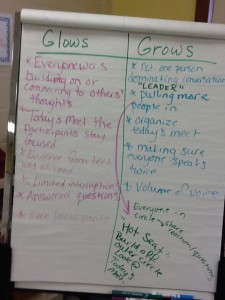

We did not stop at the Grows. Once the students compiled the list of Grows, I asked them to give me suggestions as to how they can improve these. In other words, what changes can we make to improve our Socratic Circles?
Three of the ideas the students came up with:
-Appoint a leader for each inner circle group- he/she guides the conversation
-Add a Hot Seat- this way someone from the outer circle can add a comment or question and leave. (They cannot participate in the conversation, just add a thought.)
-Have everyone share their reaction or a question they had about the reading piece, so everyone has a chance to share.
It is amazing the ideas for improvement the students have. It is a matter of asking them.
The next day we revisited our Venn diagram from earlier (before we had the discussion). I will let the results of our discussion speak for itself.
Before
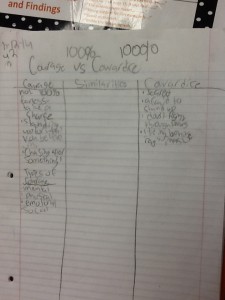
After

The power of an interactive discussion! Next up, some writing samples of the compare and contrast essays that students created from these activities.


